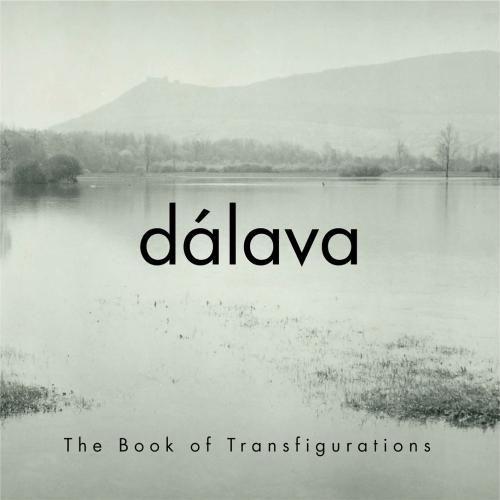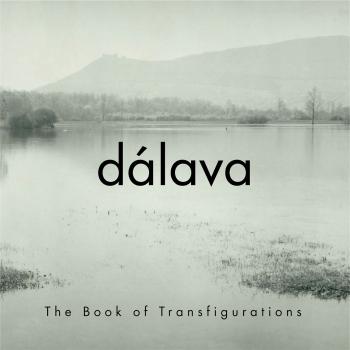
The Book of Transfigurations Dálava
Album info
Album-Release:
2017
HRA-Release:
05.05.2017
Album including Album cover Booklet (PDF)
- 1 Ej, na tej skale vysokej (Seven pairs of eagles) 02:35
- 2 Dyby ňa moja maměnka stará (Grass) 03:05
- 3 Dyž sem já šel pres hory (The rocks began to crumble) 04:15
- 4 Co ste si mamičko za dům stavjat dali (Iron bars, iron lock) 04:47
- 5 Vyletěla holubička (The bloody wall) 05:43
- 6 Sem chaso spěchajte (You used to look like a Lion) 04:47
- 7 Před naším je zahrádečka (Red violet) 02:04
- 8 Studená rosenka (Souling) 02:55
- 9 Na strážnickém rynk (War) 04:00
- 10 Vydala máti (Mother gave away her daughter) 03:16
- 11 Okolo Hradišča voděnka teče (He's bringing something for me) 05:19
- 12 Fašanku (Carnival) 02:29
- 13 Pásl Jano koně (Sell us your shirt) 02:26
Info for The Book of Transfigurations
Dálava is a unique cross-genre project that reflects a body of Moravian (Czech) folk songs of the 19th and early 20th century through the lens of 21st century creative jazz, world and post-rock styles. This is their second record – the self-titled 2014 release (Sanasar Records) featured a superb trio of New York string players. Now, American vocalist Julia Ulehla and guitar wizard Aram Bajakian (Lou Reed, John Zorn), musical and life partners, are joined by a new band of improvisers from Vancouver, where Julia is currently writing her PhD dissertation on this music. The songs are like fairy tales or compact, elliptical parables, and for each of them Dálava has crafted its own sound world. Inspired by her years in Italy as actress and singer at the Workcenter of Jerzy Grotowski and Thomas Richards, Julia animates their affecting melodies and archetypal storylines of love, death and the natural world through an improvisational yet ritual approach to performance. It’s a kind of musical séance; indeed, there is a generations-long personal bond at work, as the songs were collected in his home village by her great grandfather Vladimir Úlehla, a botanist and ethnomusicologist who viewed folk songs as living organisms. So they prove to be in Dálava’s bold, powerful and tender interpretations.
There are many fascinating aspects to the background and development of this project that Julia and Aram discuss in more depth in our interview – here are some excerpts about the performances:
Julia: “…each member of the band contributes in particular ways to grow the songs in different direction…Peggy is such a deep musician – she brings a big range from extreme delicacy to a scratchy frenetic, and there is always so much movement and flow in her playing…Every time there is a beautiful sound and you don’t know what it is, it’s Tyson. He has impeccable taste. And he understands nuance and style so well – from the tinkling bells sounds of “Fašanku” to the conjuring of 19th century piano on “Pasl Jano kone”. And Colin also has amazing style, and sense of playful spontaneity – he lays down wonderfully thick bass lines, and also does the improvisatory feedbacking sounds on “Dyby na moja”…There are times when we lock into this groove – I especially feel it on “Ej, na tej skale” and “Pred nasim”, where all of the space around starts to articulate with the rhythm, almost like a sonic sculpture if that makes sense…and it couldn’t happen without Dylan. And I have nothing but wonder for Aram and his creativity and life force. He turns things to magic, and is full of ideas…”
Aram: “…Julia will find the songs in her great-grandfather’s book that speak to her, and we’ll go through them, and I try and find a way to play something that keeps the living thing going in what she is singing. Sometimes it might be a texture or timbre. Other times it might be a chord progression, or something stylistic. For example, I heard a Reggaeton beat under the melody of “Dyž sem ja šel”…I heard that music every day for years in New York, and the rhythm is very much in me – and somehow I felt it would work with the melody, and low and behold, it did. Likewise with “Studena rosenka”, it’s such a delicate melody, and performing it live is so intimate, and I think the way I play guitar in it helps support that intimacy. It gives Julia a platform for us to trust each other in that way, while on stage…In “Vyletela” we knew we were hearing an overdriven Hofner [bass], like on all those great Beatles tracks. Colin was psyched to do that – and what he did with his instinct was amazing. But there was another track, “Na strážnickem rynku”, that when we recorded it initially with the full band, the feel wasn’t there…so we went back and decided to do it just as a quartet, with Peggy on cello and Tyson on accordion…I think it’s the most beautiful, heart-aching track on the album now.”
A 36-page booklet includes texts with English translations and Julia’s commentary on each song. Further information on the Dálava website.
Ulehla and Bajakian have already created a minor sensation in the Czech Republic with their duo recreations of this well-loved repertoire; with this release Dálava is poised to make a bigger splash on world music and creative jazz stages in both Europe and North America.
“…I was both chilled and thrilled by the fusion of avantgarde, ancient, and progressive musics…a masterpiece.”
(Mark S. Tucker, Folk And Acoustic Music Exchange)
Julia Ulehla, vocals
Aram Bajakian, acoustic & electric guitar, drums, percussion
Peggy Lee, cello
Tyson Naylor, piano, accordion, Farfisa organ, Hammond A-100, Wurlitzer, Rhodes
Colin Cowan, double bass & electric bass
Dylan van der Schyff, drums & percussion
Dalava
Guitarist Aram Bajakian and vocalist Julia Ulehla’s Dálava project is an homage to traditional Moravian folk music, taking melodies transcribed over 100 years ago by Ulehla’s great-grandfather, and reinventing them in extremely stirring, avant-garde and post-rock musical language. This deeply personal project is fresh and bold, and the latest project by the prolific Bajakian who has worked with the likes of Lou Reed, John Zorn, and Nels Cline. Following in her grandfather’s footsteps, Julia is also an ethnomusicologist and former opera singer who has collaborated on diverse music and theatre projects (Darius Jones, The Workcenter of Jerzy Grotowski and Thomas Richards). The first Dálava record (2014) received critical acclaim and was dubbed “a masterpiece” (Acoustic Music), “a work of creativity and imagination par excellence” (Inner Magazine), and described as “combining the richness of the old with the freshness and boldness of the new like no one else has done before” (Something Else Reviews). Dálava’s second album The Book of Transfigurations (release date: April 2017) delves into even deeper territory—conjuring ancestors, animating spirits, and crafting musical microcosms around the gem-like folk melodies. Though rooted in an avant, urban sonic language, this fractured village music channels the voices of a bygone era.
Booklet for The Book of Transfigurations










